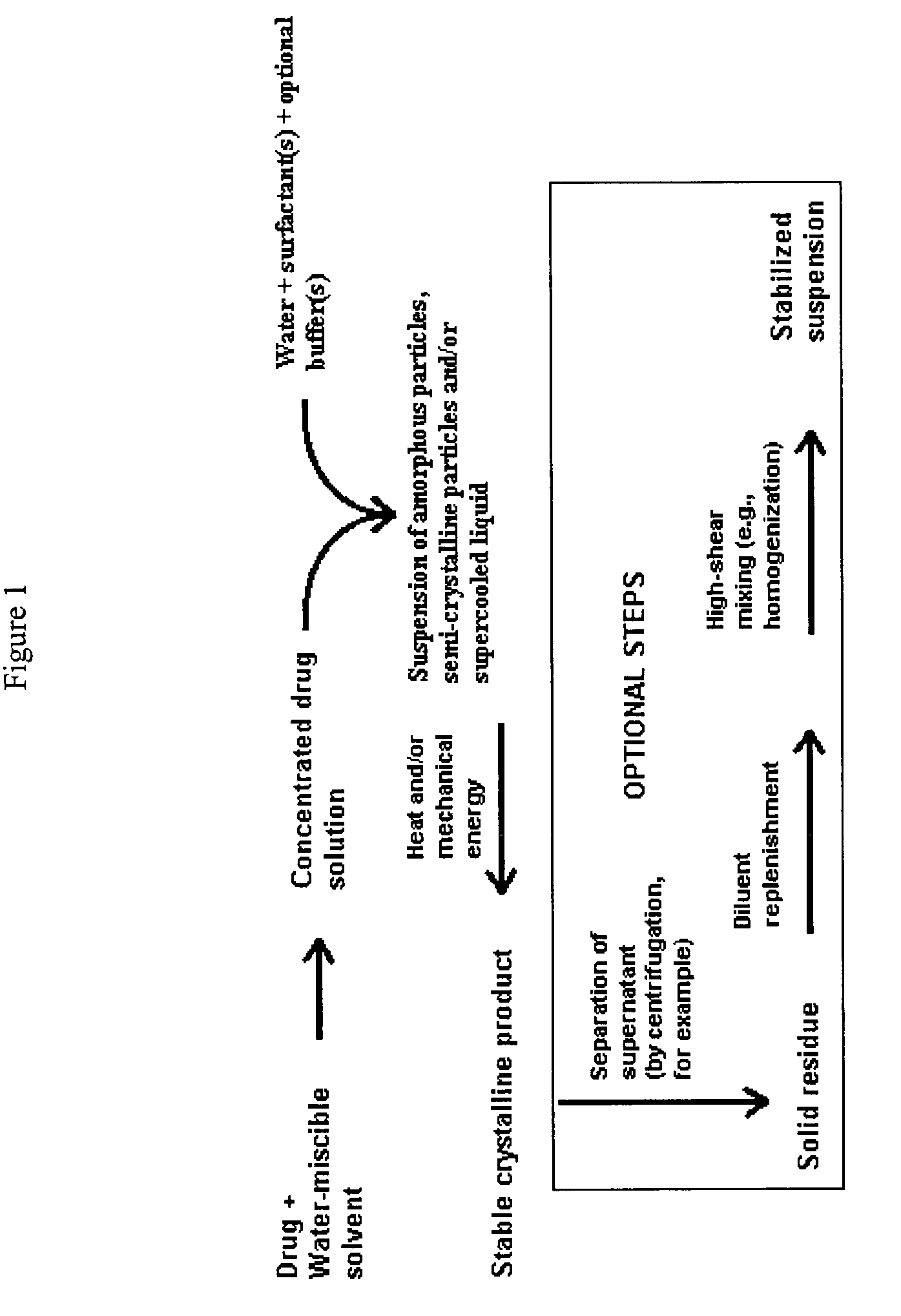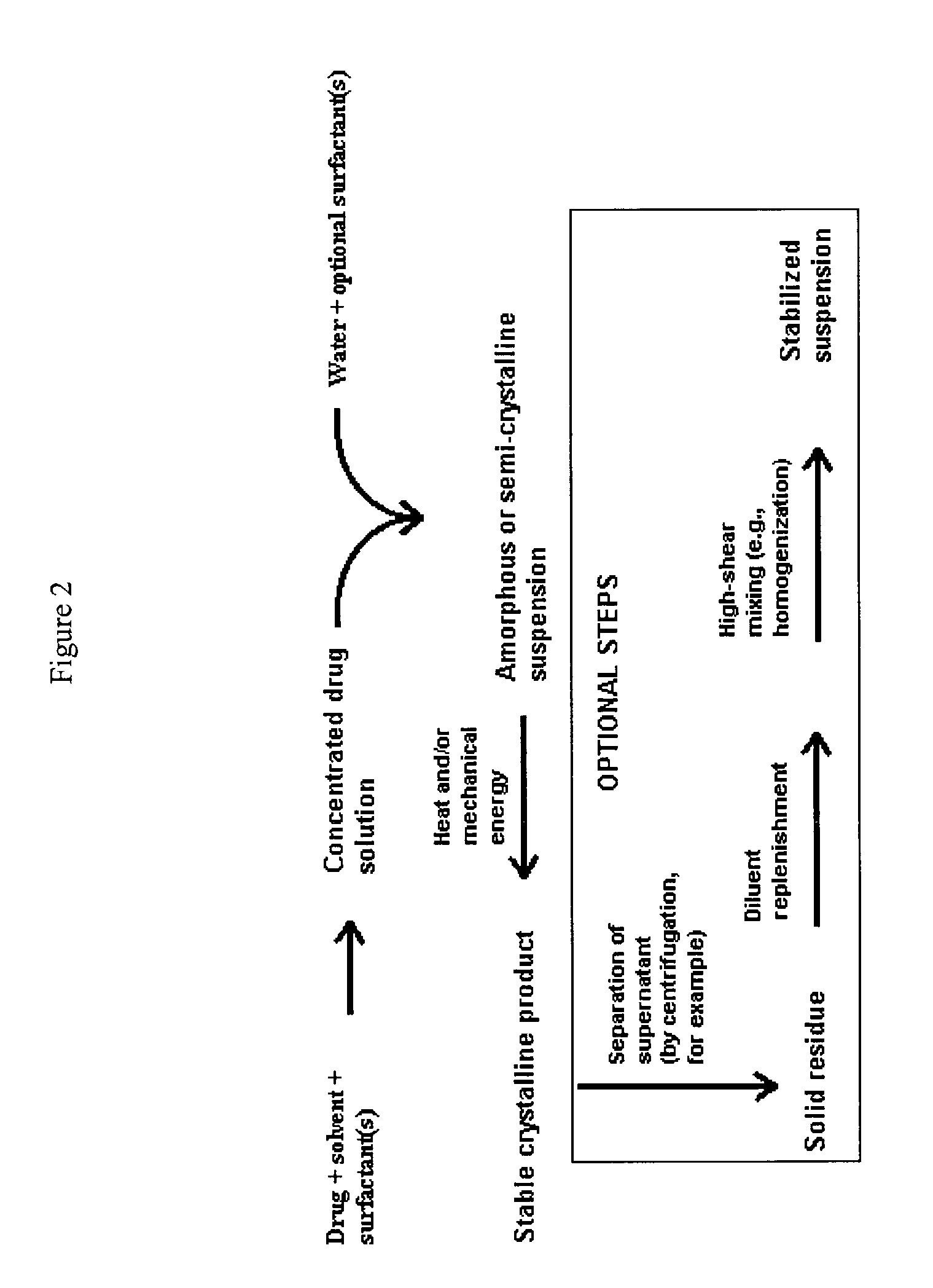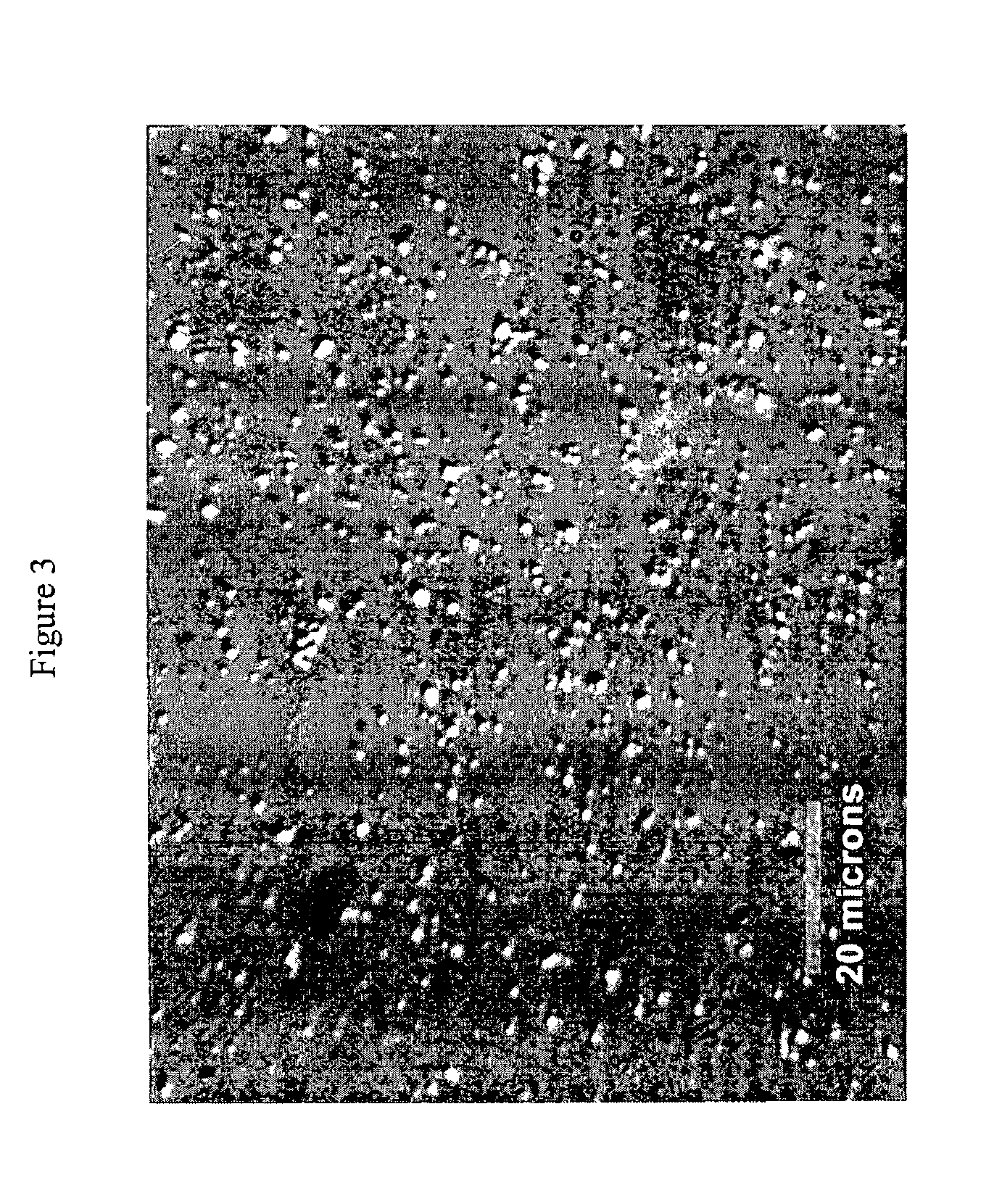Polymorphic form of itraconazole
a polymorphic form and morphology technology, applied in the field of polymorphic form of itraconazole, can solve the problems of not disclosing the steps of changing the morphology of raw materials, the increasing number of pharmaceutical drugs being formulated that are poorly soluble or insoluble in aqueous solutions, and the inability to use high-energy equipment such as sonicators and homogenizers
- Summary
- Abstract
- Description
- Claims
- Application Information
AI Technical Summary
Problems solved by technology
Method used
Image
Examples
example 1
[0082]During microscopic examination of the aliquot of Suspension A, crystallization of the amorphous solid was directly observed. Suspension A was stored at 2–8° C. for 12 hours and examined by light microscopy. Gross visual inspection of the sample revealed severe flocculation, with some of the contents settling to the bottom of the container. Microscopic examination indicated the presence of large, elongated, plate-like crystals over 10 microns in length.
Stability of Suspension B
[0083]As opposed to the instability of Suspension A, Suspension B was stable at 2–8° C. for the duration of the preliminary stability study (1 month). Microscopy on the aged sample clearly demonstrated that no significant change in the morphology or size of the particles had occurred. This was confirmed by light scattering measurement.
example 2
Preparation of Itraconazole Suspension by Use of Process Category 1, Method A with Ultrasonication
[0084]To a 500-mL stainless steel vessel add 252 mL of Water for Injection. Heat liquid to 60–65° C., and then slowly add 6.6 grams of Pluronic F-68 (poloxamer 188), and 0.9 grams of sodium deoxycholate, stirring after each addition to dissolve the solids. After addition of solids is complete, stir for another 15 minutes at 60–65° C. to ensure complete dissolution. Prepare a 50 mM tris (tromethamine) buffer by dissolving 6.06 grams of tris in 800 mL of Water for Injection. Titrate this solution to pH 8.0 with 0.1 M hydrochloric acid. Dilute the resulting solution to 1 liter with additional Water for Injection. Add 30 mL of the tris buffer to the poloxamer / deoxycholate solution. Stir thoroughly to mix solutions.
[0085]In a 30-mL container add 3 grams of itraconazole and 18 mL of N-methyl-2-pyrrolidinone. Heat mixture to 50–60° C., and stir to dissolve solids. After total dissolution is vi...
example 3
Preparation of Itraconazole Suspension by Use of Process Category 1, Method B with Homogenization
[0088]Prepare a 50 mM tris (tromethamine) buffer by dissolving 6.06 grams of tris in 800 mL of Water for Injection. Titrate this solution to pH 8.0 with 0.1 M hydrochloric acid. Dilute the resulting solution to 1 liter with additional Water for Injection. To a 3-L flask add 1680 mL of Water for Injection. Add 200 mL of the tris buffer to the 1680 mL of water. Stir thoroughly to mix solutions.
[0089]In a 150-mL beaker add 44 grams of Pluronic F-68 (poloxamer 188) and 12 grams of sodium deoxycholate to 120 mL of N-methyl-2-pyrrolidinone. Heat the mixture to 50–60° C., and stir to dissolve solids. After total dissolution is visually apparent, stir another 15 minutes to ensure complete dissolution. To this solution, add 20 grams of itraconazole, and stir until totally dissolved. Cool the itraconazole-surfactant-NMP solution to room temperature.
[0090]Charge a syringe pump (two 60-mL glass syri...
PUM
| Property | Measurement | Unit |
|---|---|---|
| Angle | aaaaa | aaaaa |
| Angle | aaaaa | aaaaa |
| Angle | aaaaa | aaaaa |
Abstract
Description
Claims
Application Information
 Login to View More
Login to View More - R&D
- Intellectual Property
- Life Sciences
- Materials
- Tech Scout
- Unparalleled Data Quality
- Higher Quality Content
- 60% Fewer Hallucinations
Browse by: Latest US Patents, China's latest patents, Technical Efficacy Thesaurus, Application Domain, Technology Topic, Popular Technical Reports.
© 2025 PatSnap. All rights reserved.Legal|Privacy policy|Modern Slavery Act Transparency Statement|Sitemap|About US| Contact US: help@patsnap.com



